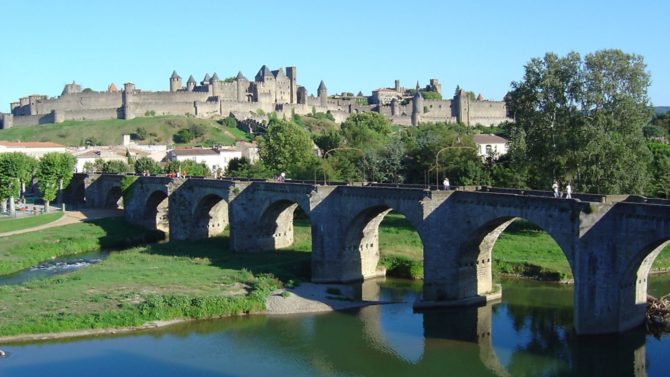Carcassonne: the perfect year-round holiday destination

Whether you are with your family, your friends or your partner, you will find something to enjoy in Aude. Discover our ideas for outings and stays and unmissable points of interest

Whether you stay in Carcassonne or explore the surrounding area, are looking for vineyards, nature or culture, planning a short stay or a longer holiday… there is always something to discover in the Aude, Cathar Country.
Daily direct flights from London Stansted to Carcassonne have opened up south-west France, making it a perfect destination for short breaks all year long.

Carcassonne
The medieval city of Carcassonne is one of France’s most popular tourist attractions, and also makes an ideal jumping off point for the rich and varied area of the department of Aude. Take any road from Carcassonne (it’s a small town so it’s easy to drive around) and all the pleasures of the south await you. Within one hour you can be in the Pyrénées, the wine regions of the Corbières or the Minervois.
You can’t fail to eat well, and the region produces high quality wine. Inland is cassoulet country, a slow cooked casserole of white haricot beans, with sausages and meat – duck or pork. It is the perfect dish for autumn and winter and you will find it in most of the restaurants of the region.

In Carcassonne, visit La Cité out of season. The medieval town is on a rocky spur overlooking the River Aude and completely encircled by a double wall of fortifications punctuated by 52 massive towers. Only a little imagination is required to envisage it besieged by crusading armies! Within the walls is a labyrinth of restored medieval houses and winding streets. Despite the souvenir shops this is still a real town with around 100 permanent inhabitants.
Carcassonne’s lower town on the opposite side of the river Aude, is an agreeable small town and a good base for touring the countryside. It retains its original ‘new town plan’, with a grid pattern of streets typical of the many bastides established in the region during the 13th century. Old mansions, churches and chapels, the port of the Canal du Midi and the lovely market place in the centre are the main attractions of Carcassonne’s bastide.
Several excellent restaurants in Carcassonne offer the perfect combination of traditional and modern cuisine!

Around Carcassonne
The Corbières, the Pyrenean foothills south east of Carcassonne, are the very heart of Cathar country. Much of the land is untamed garrigue, fragrant with honeysuckle and broom, though vines are planted almost everywhere. Tucked away here and there are discreet châteaux, many of them wine estates which offer wine tastings and often charming accommodation.
You should certainly visit the castles, spectacularly perched fortresses where the Cathar heretics found their refuge during the Crusade. The most dramatic castles are in the far south of the Corbières.

Peyrepertuse, of one the most spectacular, can only be reached by one long and winding road. Visible from Peyrepertuse is Quéribus, its one remaining keep dominating the plain of Roussillon below. Others worth visiting include Puivert, Arques, Villerouge-Termenès where a medieval restaurant is located, and Puilaurens.
Along the edge of the Corbières, south from Carcassonne, the gentle contours of the Aude valley lead towards Limoux, a pleasant market town of medieval arcades which produces the world’s first sparkling wine, Blanquette de Limoux (worth stocking up on). If you like to visit mediaeval monuments do not miss the Benedictine abbey of Saint-Hilaire, where Blanquette de Limoux was invented by the monks.
The best-kept secret hereabouts is Alet-les-Bains, a spa town with beautifully preserved half-timbered houses and the romantic ruins of a once noble Benedictine abbey. Espéraza is a must for anyone with small children – the dinosaur museum is a treat!
North of Carcassonne, in the Montagne Noire (Black Mountain) you can visit the paper mill at Brousses, still producing fine quality hand-made paper. Tiny stone villages nestle into the sides of the gorges including Lastours, which gets its name (meaning ‘the towers’) from the four ruined castles, some of which undoubtedly sheltered the unfortunate Cathars.
Also within easy striking distance is Montolieu, the book village of France (‘Village du Livre’), modelled on Hay-on-Wye in the UK. Small shops sell new and second-hand books, including some English bookshops, as well as craftsmen, restaurants and typical cafés.
You see in the Aude, there is something for everyone’s taste!
For more info visit www.audetourisme.com
Share to: Facebook Twitter LinkedIn Email


